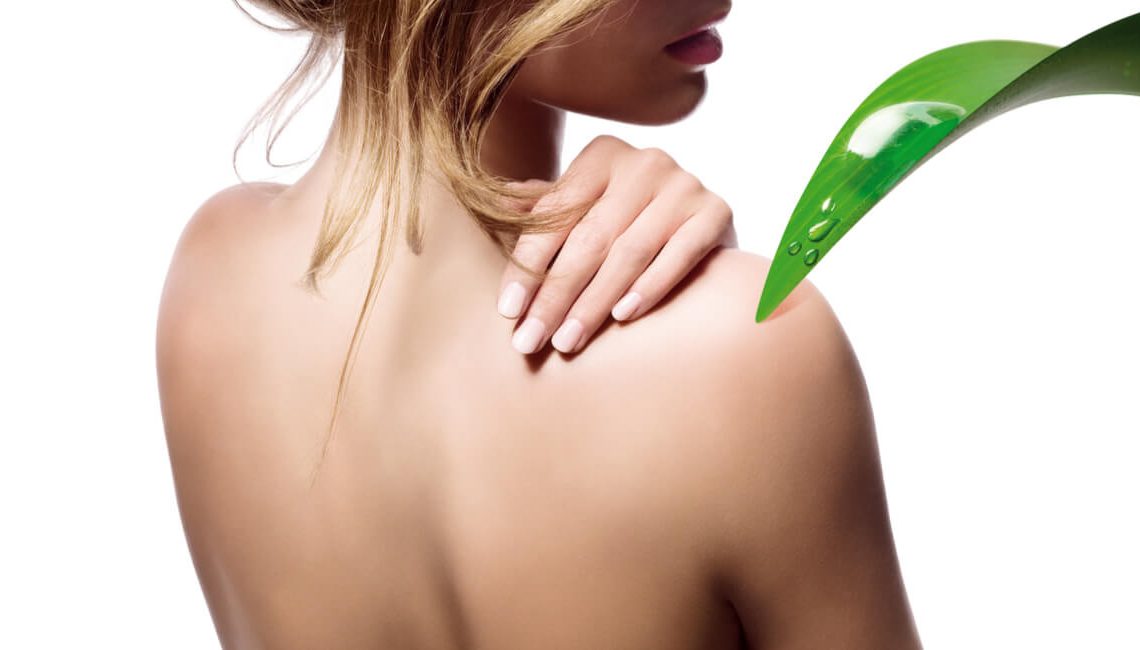
We all focus our skincare to the face, neck and décolleté, hands and hair. And we neglect other less obvious but equally seductive skin areas. No more!
The back, elbows and heels, the legs, or areas of localized adiposity: all these skin areas require constant and targeted care. First and foremost, the skin of the back and shoulders is decidedly thick, rich in sebaceous glands larger than those of the face and almost always damaged by the sun. It therefore often looks “impure”, dotted with blackheads and acne. Moreover, solar lentigo forms over time, as do pigmented spots caused by the harmful action of the sun on the skin.
The skin on the back of the neck is different: the epidermis is rather thick and dry. In cases of photosensitivity and chronic solar exposure it ages prematurely with the formation of almost rhomboid-shaped wrinkles; whereas in cases of irritable skin (such as atopic dermatitis) it tends to become rough and brownish in color. If the skin of the torso is greasy and porous, it will require thorough scrubbing; for a more intensive cleansing, you can turn to specific scrub- or exfoliating cosmetic products. You can also try using a bristle brush glove in the shower. You can use relatively more concentrated detergents here, so as to effectively remove sebum and impurities. For the treatment of hyperpigmented spots, dermatologists can recommend microdermabrasion, peeling or medical laser treatments, which are all both effective and safe.
On the other hand, aggressive cleansing isn’t recommended for the back of the neck; moisturizing is to be preferred in this area. The elbows and heels are particularly prone to pressure, rubbing and trauma, factors that determine their persistently rough appearance; add to this poor hydration and slow cellular turnover, visible as the skin thickens. If the moisturizers you normally used for the rest of your body is ineffective in these areas, you can use a urea- and salicylic acid-based cream: these ingredients are also called keratolytic substances because they desquamate the stratum corneum. For your heels, my advice is to dip your feet in warm water with baking soda for 10-15 minutes and then rub the heels with a pumice stone before applying a specific moisturizer and emollient.
The legs’ particular predisposition to dryness and skin roughness is due to the reduced production of surface hydrolipid film, the slowness of skin desquamation and cellular turnover, and the loss of hydration. The treatment for dry legs is avoiding using aggressive detergents, sponges or abrasive brushes, and using with warm but not boiling water so as not to alter the natural water- and lipid content of the already damaged skin. Good exfoliating treatments, as long as they are delicate, can promote cell turnover and therefore eliminate the dead cells from superficial stratum corneum. Also be careful of hair removal: whether we use razors or waxes, it always worsens already-damaged skin. Last reminder: apply a moisturizing product daily, possibly vegetable oil-based, such as almond oil or shea butter, urea and ceramides.
The skin of the abdomen, breast and buttocks, compared to other parts of the body, is more prone to laxity, aided by the tendency to accumulate fat, the force of gravity, age, sudden weight loss and obviously hereditary factors. Furthermore, inelastic skin is often marred by stretch marks, indicating poor collagen and elastin synthesis. Needless to say, the benefits of a healthy diet associated with constant physical activity are undisputable; on a dermocosmetic level, one can intervene both internally, acting on the adipose tissue, and externally improving the appearance of the skin.
Among the cosmetic active ingredients are Fucus extract, Ficus Carica extract, grapefruit extract (promotes lipolysis); buckwheat extract (contributes to the inhibition of lipogenesis); caffeine, menthol or ethylnicotinate (with thermal activity). To improve skin elasticity, better opt for dermatological creams containing plant extracts, vitamins, antioxidants and biopeptides: they increase collagen and elastin production and stimulate fibroblast activity. Remodeling treatments, on the other hand, are recommended in case of moderate localized adiposity: massage therapy, lymph drainage, cavitational ultrasonography and cryolipolysis are all valid options.
Article of Dr Adele Sparavigna for https://4me.styl


